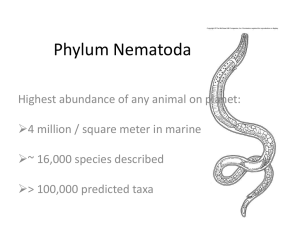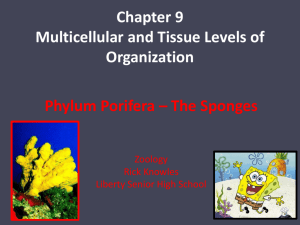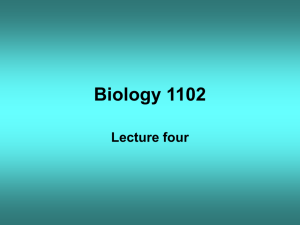The simplest animals
advertisement
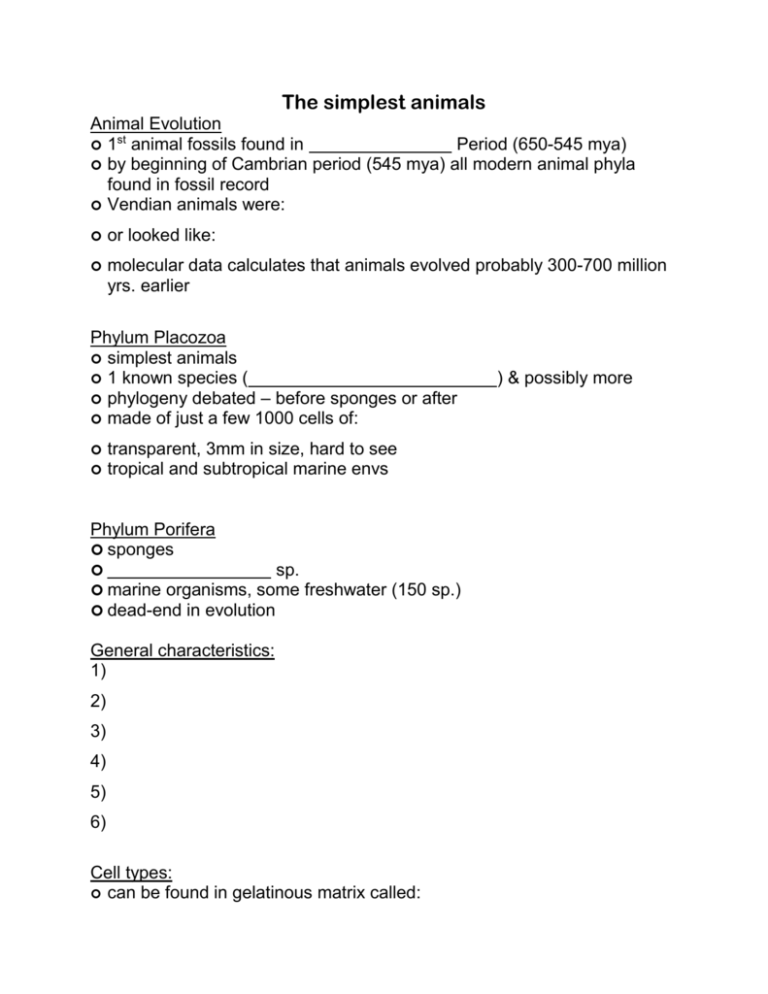
The simplest animals Animal Evolution 1st animal fossils found in Period (650-545 mya) by beginning of Cambrian period (545 mya) all modern animal phyla found in fossil record Vendian animals were: or looked like: molecular data calculates that animals evolved probably 300-700 million yrs. earlier Phylum Placozoa simplest animals 1 known species ( phylogeny debated – before sponges or after made of just a few 1000 cells of: transparent, 3mm in size, hard to see tropical and subtropical marine envs Phylum Porifera sponges sp. marine organisms, some freshwater (150 sp.) dead-end in evolution General characteristics: 1) 2) 3) 4) 5) 6) Cell types: can be found in gelatinous matrix called: ) & possibly more 1) - flat, thin cells that line outer surface some are contractile which changes shape of sponge 2) 3) - pore cells - regulate water circulation - collar cells line inner cavities involved in water circulation & filtering water for food 4) - found in the mesohyl amoeboid cells that perform many functions: Energy acquisition diet is mainly bacteria, phytoplankton, zooplankton & suspended organic matter filter food by trapping it on collar. food particle is then carried down collar & phagocytized digest larger particles of food dissolved nutrients may be absorbed thru active transport Reproduction Asexual - freshwater & some marine sp - mass of amoeboid cells w/in a capsule of spicules released when parent dies in winter in spring, amoeboid cells leave capsule & develop into sponge budding - small bud grows from parent & breaks off to form new individual Sexual Reproduction sponges usu. no self-fertilization because eggs & sperm not produced at same time some choanocytes undergo meiosis & become: either choanacytes or archaeocytes undergo meiosis & become: eggs stay in mesohyl, sperm exit thru osculum to another sponge enter with incurrent water sperm trapped by choanocytes & incorporated into vacuole choanocytes become amoeboid & transport sperm to egg zygote usu. develops in mesohyl to flagellated larval stage larvae swim away from parent sponge & settle down after a brief period develop into adult body Mesozoa very small animals, ranging from 0.5 - 7 mm in length typically just 20-30 cells in all. worm-like with a ciliated epidermis. parasitic in different marine invertebrates. Phylum Rhombozoa sexual and asexual stages to their life cycle parasitizes: Phylum Orthonectidea parasitic on: asexual stage called a:
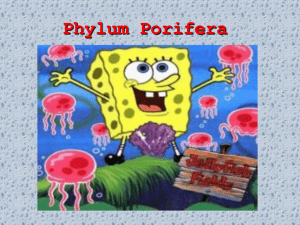


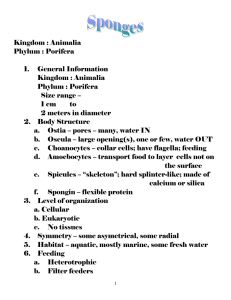

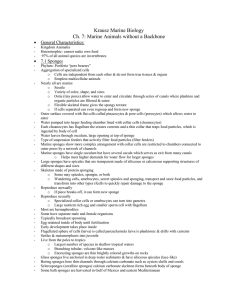
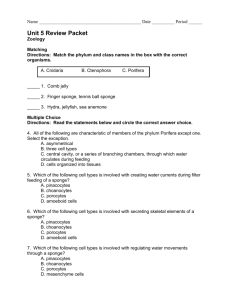
![1-poriferaUpdated2010[1]](http://s3.studylib.net/store/data/009225420_1-89887d6f4426488593b716b18adc7467-300x300.png)
